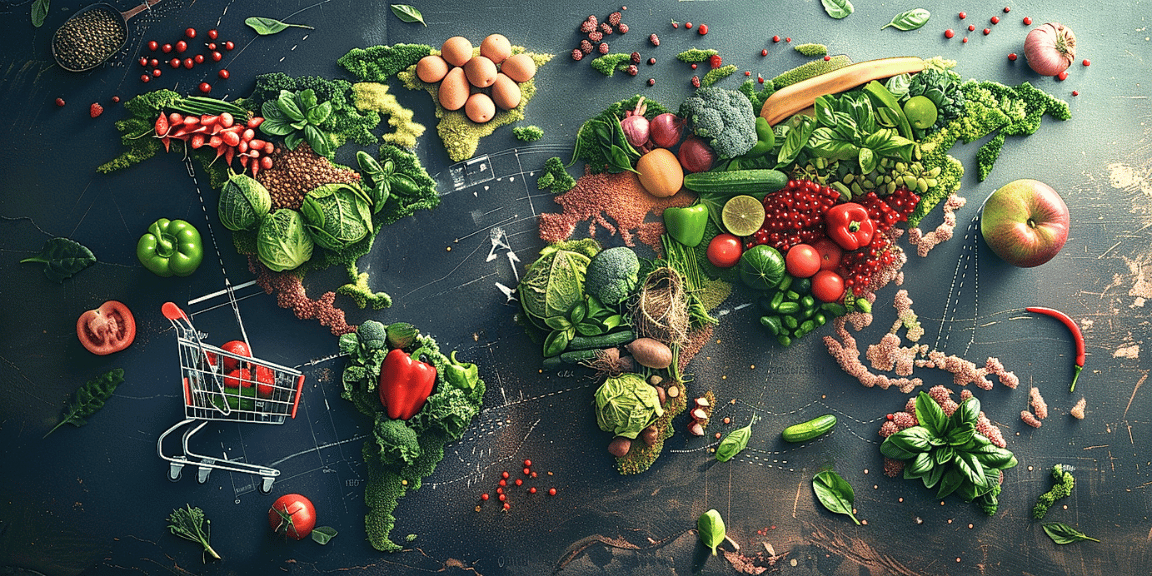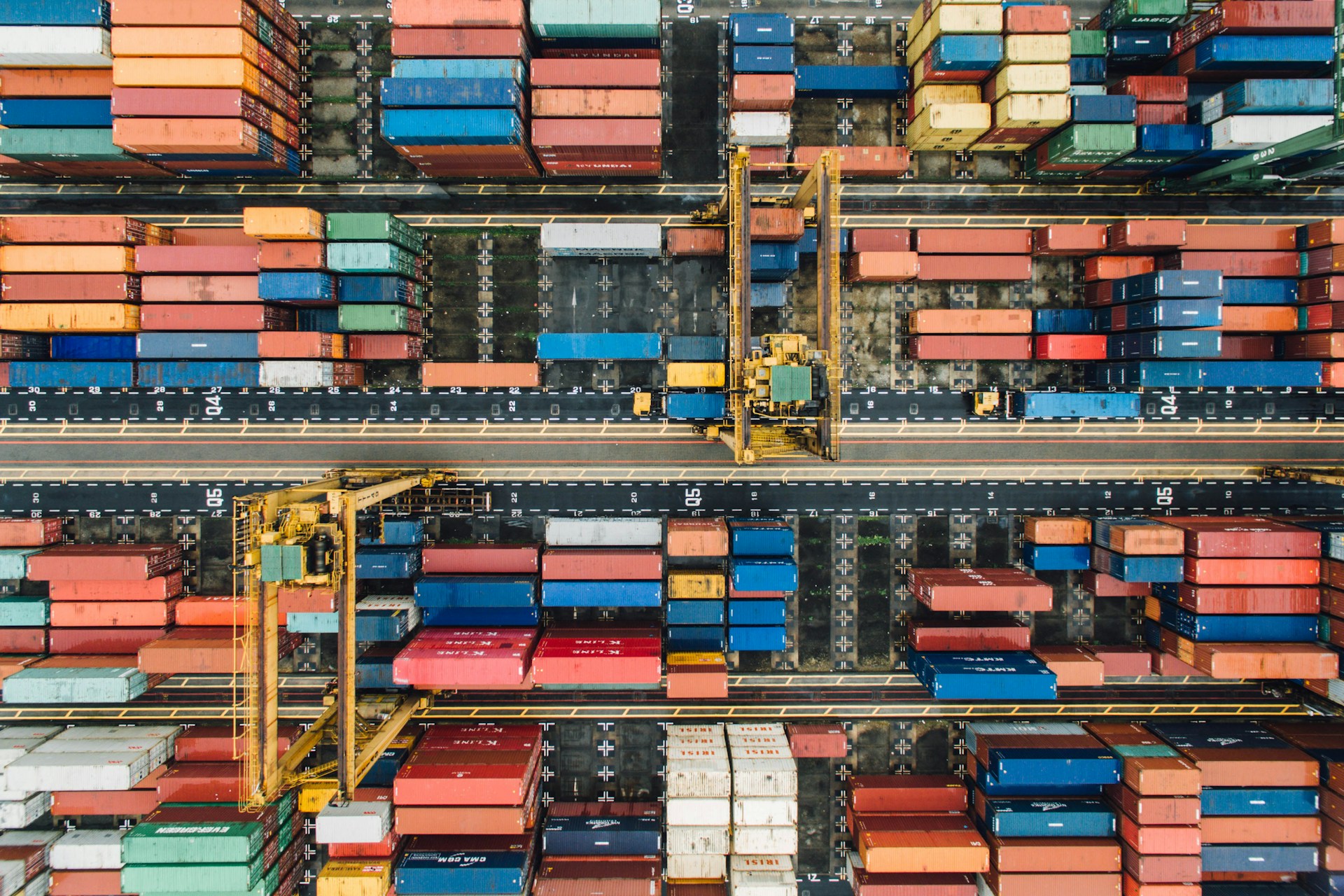The ever-evolving, dynamic realm of international commerce is witnessing profound shifts integral to the functioning of global market systems.
Prevailing trade trends are shaping the way commodities, particularly produce, are distributed worldwide.
This comprehensive analysis examines these transformations, delving deep into the trends in the trade of agricultural produce.
Furthermore, this piece explores how these shifts impact economies, businesses and consumers alike.
Given the significance of produce distribution in global trading, this aspect markedly influences strategies of nations and corporations.
Permeating this intricate web of global trade, these shifts deserve a detailed exploration which we embark on herein.
Global Trade Trends & Produce Distribution
1. Increasing reliance on e-commerce for global trade
As we dive into the 21st century, global trade is becoming increasingly tied to e-commerce.
This digital revolution in trade has paved the way for a streamlined exchange of goods and services across international markets.
E-commerce has proven itself an efficient and versatile platform for conducting business, encouraging an escalating dependence on its advantages.
The ease of online transactions has fueled the exponential growth of global e-commerce trade.
Business-to-business (B2B) and business-to-consumer (B2C) markets alike are reaping the benefits of this digital shift.
Without the need for a physical retail presence, e-commerce allows businesses to reach a vast global audience.
Furthermore, it promotes inclusivity for small and medium-sized enterprises (SMEs), giving them access to global markets that were previously out of reach.
Technical advancements in e-commerce have enhanced trade transparency and lowered transaction costs, propelling its adoption even further.
The rate of e-commerce adoption has seen a significant surge in light of the Covid-19 pandemic.
It has compelled businesses to operate remotely and adapt to online marketplaces, further entrenching the role of e-commerce in global trade.
As digital payment systems and logistic networks evolve, the convenience and efficiency of e-commerce will only escalate.
E-commerce platforms provide businesses with data-driven insights, enabling them to fine-tune their strategies and stay competitive.
However, the reliance on e-commerce doesn’t come without challenges.
Issues such as data privacy, cyber security threats, and digital divide must be addressed to sustain its growth.
Regulatory frameworks need to adapt to the changing landscape of e-commerce to protect consumers and maintain fair trade practices.
Despite these obstacles, the increasing reliance on e-commerce for global trade is potentially transformative.
All in all, the shift towards e-commerce presents an exciting time for global trade.
Trends point towards a future where trade is progressively digitized, revolutionizing the ways in which we engage in global commerce.
2. Sustainability driving change in produce distribution.
The global trade scene is witnessing a transformative shift, marked by sustainability becoming a crucial factor in produce distribution.
There is a surge in awareness about the importance and impact of sustainable practices, especially in the area of global trade, and this surge is driving sweeping changes in produce distribution.
The impacts of traditional produce distribution methodologies on the environment are profound, leading to imperative calls for sustainable alternatives.
Environmental consciousness among consumers is forcing businesses across the globe to integrate sustainability into their strategies inherently – specifically in their distribution channels.
Distributors are now adopting sustainable supply chain practices, such as energy-efficient logistics, reduced food wastage, and ethical sourcing.
Firms are also utilizing green technologies like electric vehicles for delivery, which contributes to a significant decrease in carbon emissions.
While solar-powered cold storage facilities are improving produce preservation while minimizing energy consumption.
Another trend in sustainable produce distribution is the increased adoption of real-time data analytics and Internet of Things (IoT), supporting effective decision-making and optimization of resources.
In the quest for sustainability, businesses are also exploring the potential of alternative packaging materials that are both biodegradable and eco-friendly, significantly reducing waste generation.
Several businesses are also leveraging blockchain technology to ensure transparency and traceability in their supply chain, highlighting their commitment to ethical sourcing and sustainability.
Moreover, corporations are forming strategic partnerships with startups and innovators focused on green solutions, which help them achieve their sustainability targets without compromising scale and efficiency.
Indeed, sustainability is not just a trend, but a necessary evolution in global trade, and produce distribution is at the forefront of this transition.
Although challenges exist in the transition to more sustainable methods, businesses that commit to sustainable practices demonstrate a willingness to go the length despite difficulties or potential short-term financial setbacks.
With the growing emphasis on sustainability in trade, the future of produce distribution seems to belong to those who recognize the long-term value of sustainable practices.
To conclude, the movement towards sustainability in produce distribution is not only driving significant change in global trade practices but is also expected to offer robust solutions to the environmental challenges of our times.
3. Heightened demand for traceability in supply chains.
In today’s world of global trade, one of the most prominent trends is the heightened demand for traceability in supply chains.
With an increasingly interconnected world, complete with complex global supply chains, the need for transparency and accountability in the movement of goods has never been greater.
Consumers, regulators, and businesses alike are constantly seeking more information about the products they buy, sell, and regulate, driving a significant demand for traceability.
This demand spans across industries, but is particularly relevant for produce distribution, given the perishability of food products and the resulting implications for food safety and quality.
Traceability in supply chains allows for better track of product provenance, reducing chances of contamination, and providing insights for more effective recalls when necessary.
Traceability systems also allow consumers to gain a better understanding and trust in the products they consume.
In recent years, technologies such as Blockchain have emerged to offer unparalleled traceability and transparency in supply chains.
The use of such technologies, however, is not without challenges and constraints, further emphasizing the importance of innovative and robust solutions in the field of supply chain management.
From an ecological perspective, traceability systems can help ensure environmental compliance, reducing the impact of illegal and unsustainable practices in product sourcing and distribution.
As a result of these benefits, the need for traceability in supply chains extends beyond the regulatory requirements, and is increasingly being recognized as a strategic business imperative.
In fact, several leading companies have begun to differentiate themselves based on their traceability initiatives and the associated benefits.
Thus, the enhancement of traceability in supply chains is not just a trend, but a necessary evolution for companies looking to remain competitive in the era of increasing globalization and digitalization.
As we move forward, the demand for traceability in supply chains will continue to increase, driven by a combination of regulatory requirements, consumer preferences, technological advancements, and business strategy considerations.
Therefore, businesses, policy-makers, and stakeholders must come together to address this demand efficiently and effectively, ensuring a more transparent, safe, and efficient global trade environment.
4. Rapid Growth in Cross-Border Digital Trade
The digital revolution has led to a remarkable surge in cross-border trade, one of the most striking signs of global economic interdependence and integration.
Through digital trade, businesses from various countries can connect, interact, and execute transactions, unfettered by geographical boundaries.
The expansion of cross-border digital trade has opened up new avenues for businesses, particularly small and medium-sized enterprises in developing countries.
It has also radically transformed industries and markets, redefining the very concept of trade and commerce.
From retail and real estate to finance and education, no sector has been untouched by the swift spread of digital commerce.
The exponential rise in the use of e-commerce platforms and digital payment methods has been a key driver of this trend, enabling seamless, safe, and swift cross-border transactions.
E-commerce has grown to become an essential part of global trade, and its cross-border aspect is accelerating at a breakneck pace.
Nonetheless, this trend is not without challenges.
Regulatory barriers, infrastructural inadequacies, data protection concerns, and digital divides are just some of the issues that need to be addressed.
As consumers become more digitally savvy and trust in online transactions grows, the potential for gains in cross-border digital trade continues to reach new heights.
Equally, businesses must adapt and evolve, harnessing the possibilities in technology and innovation to keep up with changes in the market and emerging customer expectations.
Indeed, the middleman’s traditional role is being eclipsed, and transactions between buyers and sellers are becoming more transparent and instantaneous.
While reshaping economic landscapes and business models, this trend has profoundly impacted how trade is conducted, pushing businesses to rethink their strategies and embrace a global outlook.
The widespread use of smartphones and social media, coupled with technological advancements, has thus fueled this trend, implying that the growth in cross-border digital trade is likely to continue unabated.
Moreover, the current Covid-19 crisis has reinforced the relevance of digital trade, with many businesses transitioning online to survive and thrive in the new normal.
The astounding speed and scale at which cross-border digital trade is expanding underscore the need for policies and frameworks that will support its sustainable growth and mitigate risks.
As we move forward in this digital era, the importance of cross-border digital trade will only increase, shaping the future of global trade and its implications for produce distribution.
5. Shift toward eco-friendly packaging in distribution.
The global trade industry is experiencing a significant shift towards eco-friendly packaging in the distribution of produce, largely influenced by increasing environmental concerns and customer expectations.
With an increasing global consciousness about the environment, industries, including trade and distribution, are urged to reduce their environmental footprint.
This new focus on sustainability has led to changes in the packaging methodologies of many major corporations around the world.
Consumers, businesses, and governments are collectively pushing for the implementation of eco-friendly alternatives to traditional packaging materials, which are often non-biodegradable or non-recyclable.
As a result, the adoption of greener, sustainable packaging solutions in produce distribution has become a must for global trade businesses seeking to adapt to this changing landscape.
The choice of packaging plays a crucial role in determining the carbon footprint of a company’s supply chain and, ultimately, its overall environmental impact.
Therefore, the development and application of sustainable packaging solutions are seen as a strategic move to stay competitive and meet regulatory requirements in the market.
Eco-friendly packaging includes the use of recyclable materials, biodegradable materials, or packaging designed to use resources more effectively.
These eco-solutions, such as using packaging made from plant-based polymers or recycled materials, result in a significant reduction in waste and a decrease in the reliance on non-renewable resources.
Moreover, the transition to sustainable packaging not only benefits the environment but can also positively impact a company’s bottom line.
It’s observed that customers are increasingly willing to pay a premium for products that are sustainably packaged, and they often perceive these brands to be of a higher quality.
Consequently, the shift towards eco-friendly packaging can be seen as a win-win situation: it benefits the planet and can also significantly boost a company’s profile and profitability.
To successfully make this transition, companies should conduct comprehensive research into applicable regulations, customer preferences, and the most efficient and cost-effective green packaging materials and technologies available.
In the end, the shift towards eco-friendly packaging represents a significant trend in the global trade industry, with potential for far-reaching impacts on both environmental sustainability and corporate profitability.
Undoubtedly, the future of global trade and produce distribution lies in the adoption of greener and more sustainable practices, with eco-friendly packaging at the forefront of this movement.
The Bottom Line
Enhancements in e-commerce are dramatically shaping international trade, making it a profoundly significant factor in global business strategies.
Changes are also being ushered in by a growing commitment to sustainability, which is particularly prominent in the sphere of produce distribution.
Additionally, the heightened demand for traceability in supply chains has brought about a critical shift in industry practices, emphasizing the need for full transparency.
The remarkable surge in cross-border digital trade further signifies the transformative impact of technology on international business activities.
Likewise, the movement towards environmentally friendly packaging in distribution reflects the rising consciousness regarding ecological responsibilities within the sector.
These evolving trends signify a rapidly changing landscape of global trade and reflect the increasing alignment of economic pursuits with environmental sustainability and technological advancements.




